Best iPhones in 2022: Which iPhone should you buy?
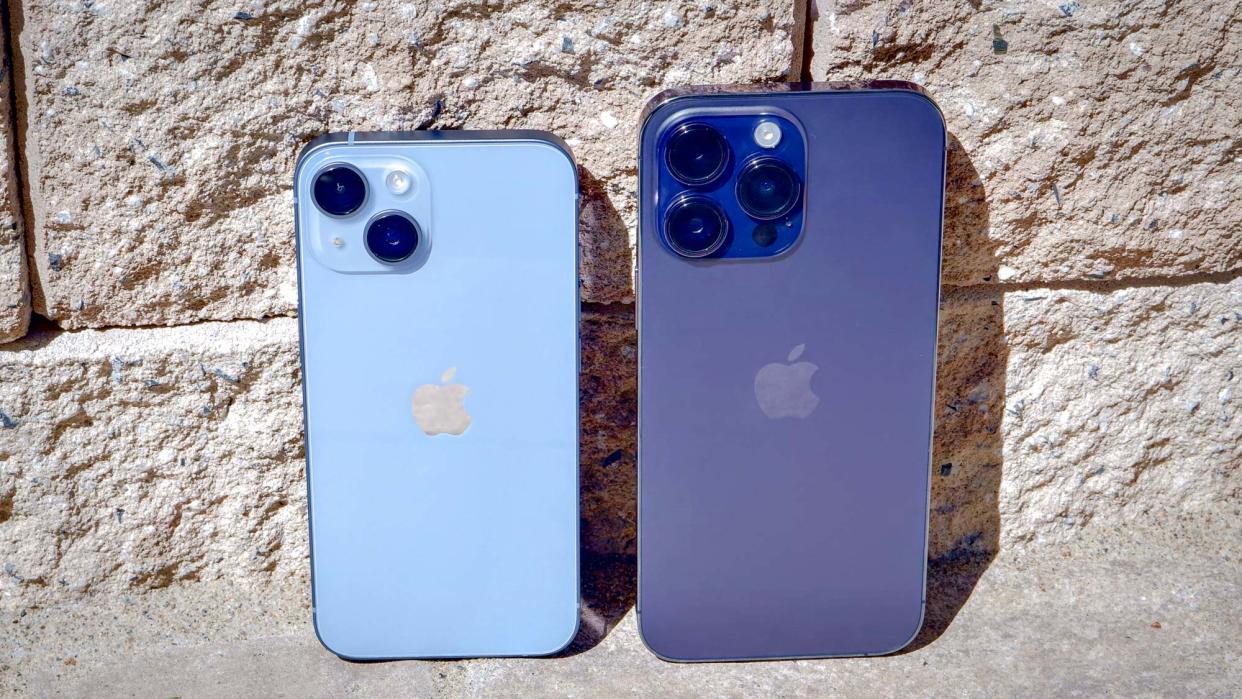
The new iPhones have arrived, and our best iPhones rankings reflect the changes Apple's made to its smartphone lineup. Three of the four iPhone 14 models arrive in stores on September 16, and not coincidentally, they also top our list of the iPhones you should consider if you're in the market for a new phone.
Apple's not done yet. The super-sized iPhone 14 Plus follows the iPhone 14, iPhone 14 Pro and iPhone 14 Pro Max next month, arriving in stores October 7. And if it's anything like its fellow iPhone 14 siblings, the Plus will deliver some impressive new features, even if the Pro models see the bulk of the changes in this year's update.
There's more to the best iPhones than the new models. Apple has kept around some of the iPhone 13 lineup as well as the iPhone 12. Even better, those phones are available at lower prices. If you're hunting for a bargain, an older iPhone could be right for you.
Whether you're a long-time iPhone fan or just making the switch from Android to iPhone, we can help you find a phone you'll be happy to use. Here's how we rank the best iPhones currently available.
What are the best iPhones?
The iPhone 14 Pro Max is the best iPhone Apple's ever made, with terrific cameras, a powerful processor and a long-lasting battery. It introduces a new Dynamic Island feature to the display, replacing the notch, and iPhone owners can finally enjoy a long-lasting display. The iPhone 14 Pro introduces most of those same features — its battery isn't as big as the one in the Max — but in a device that costs $100 less than Apple's more expensive Pro model.
An iPhone 14 vs. iPhone 14 Pro comparison shows that the big changes to the iPhone 14 lineup can be found in the Pro models. But don't overlook the standard iPhone 14, which sees camera improvements, a vibrant display and valuable new features like crash detection and the ability to send emergency texts over satellite. Best of all, it's kept the $799 or its predecessor.
Still too rich for your budget? The iPhone 13 has been the best iPhone for most people, with powerful cameras and a top-performing A15 chipset. It now costs less, too, dropping to $699 with the arrival of the iPhone 14. The iPhone 13 mini is also cheaper, dropping to $599.
One iPhone 12 phone remains in Apple's lineup, with the 6.1-inch now costing the same $599 as the 5.4-inch iPhone 13 mini. With Apple dropping the iPhone 11 from its lineup, the $429 iPhone SE (2022) is now Apple's only sub-$500 phone, and the cheapest 5G phone you can get.
The best iPhones you can buy right now
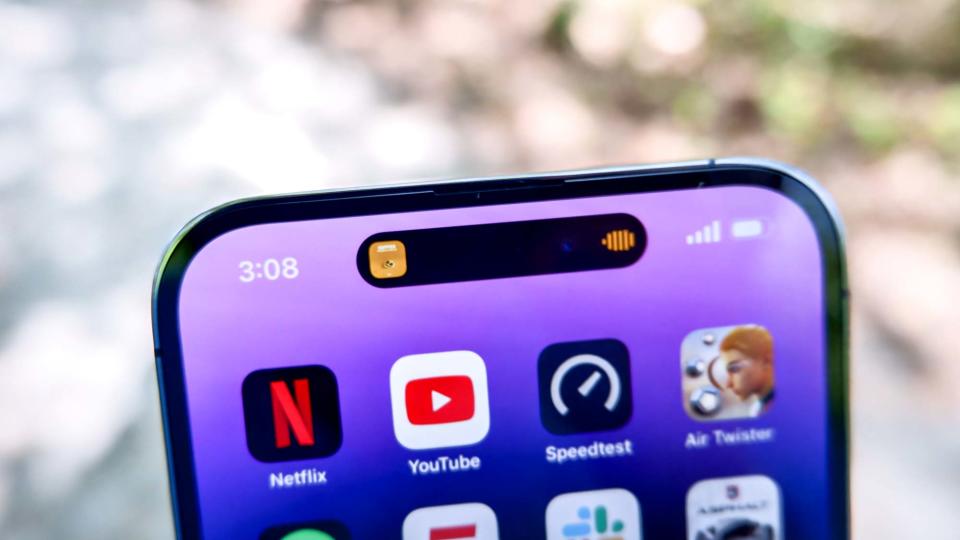

1. iPhone 14 Pro Max
The best iPhone you can buy
Screen Size: 6.7-inch OLED (2796 x 1290; 120Hz) | Processor: A16 Bionic | Cameras: 48MP (f/1.8) main with 2x optical zoom, 12MP (f/2.2) ultrawide, 12MP (f/2.8) telephoto with 3x optical zoom, LiDAR / 12MP front (f/1.9) | RAM/Storage: 6GB/128GB, 256GB, 512GB, 1TB
Superb 48MP camera
Very smart Dynamic Island
Best-in-class battery life
Still just 20W charging
A bit thicker and heavier than the iPhone 13 Pro Max
If you want the best iPhone regardless of price, look no further than the iPhone 14 Pro Max. All of the big changes Apple made to its Pro lineup are on display in this phone — the faster A16 Bionic processor, the improved 48MP camera and the eye-catching Dynamic Island feature that replaces the notch. Plus, you get an expansive 6.7-inch display with a big battery to match. That battery kept the iPhone 14 Pro Max running for more than 14 hours in our test, the best time an iPhone has ever posted.
The iPhone 14 Pro Max’s hits keep on coming. The new Action mode captures smooth video even when you and your subject are on the move. The always-on display brings a long-requested feature to the iPhone and does so in an elegant way. Even the front camera sees an improvement with addition of autofocus and a wider aperture to let in more light.
We struggle to come up with any serious complaints about the iPhone 14 Pro Max, which is not only the best phone you can buy right now, but the best iPhone Apple’s ever made.
Read our full iPhone 14 Pro Max review.
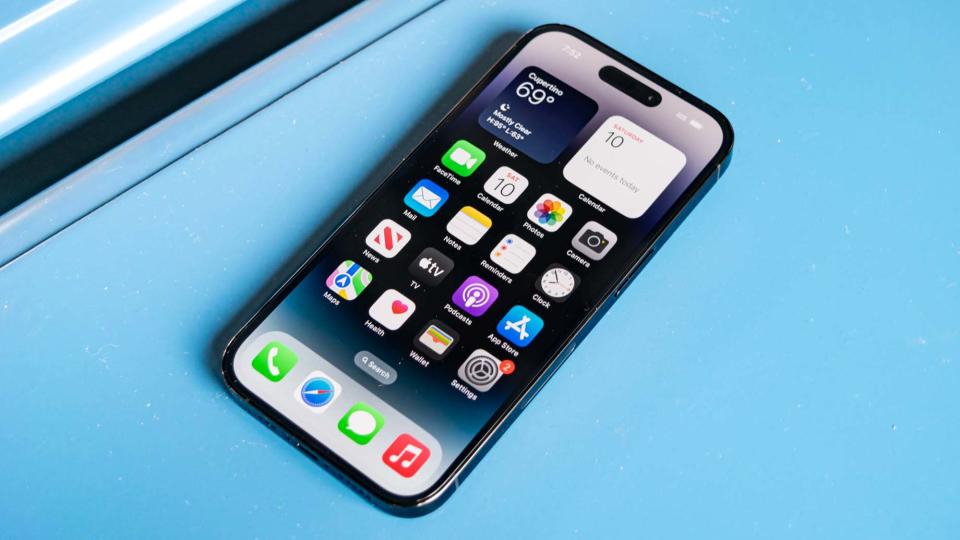

2. iPhone 14 Pro
Apple’s best features for under $1,000
Screen size: 6.1-inch OLED (2556 x 1179; 120Hz) | CPU: A16 Bionic | Cameras: 48MP (f/1.8) main with 2x optical zoom, 12MP (f/2.2) ultrawide, 12MP (f/2.8) telephoto with 3x optical zoom, LIDAR / 12MP front (f/1.9) | RAM/Storage: 6GB/128GB, 256GB, 512GB, 1TB
Dynamic Island is a good notch replacement
Best performance in a smartphone
Incredible cameras
No physical SIM tray in U.S. models
As great as the iPhone 14 Pro Max is, the $1,099 starting price may put it out of range for some shoppers. For just $100 less, though, you can get nearly every great feature in that phone by turning to the iPhone 14 Pro.
The A16 Bionic chipset is here, as is the improved 48MP main camera. Dynamic Island replaces the iPhone’s notch and does more than just provide a home for Face ID sensors and the improved front camera; it’s also a hub for notifications that will only become more powerful as app makers take advantage of the space.
The iPhone 14 Pro also appeals to people who prefer more compact phones than the massive iPhone 14 Pro Max. Even though the screen is smaller at 6.1 inches, the iPhone 14 Pro still has a dynamically refreshing display that can scale down to 1Hz, enabling an always-on display feature.
From cameras to display brightness to the way it handles demanding apps, the iPhone 14 Pro is a winner, and a way to enjoy the high-end Pro features Apple has added to its lineup without paying Max prices.
Read our full iPhone 14 Pro review.
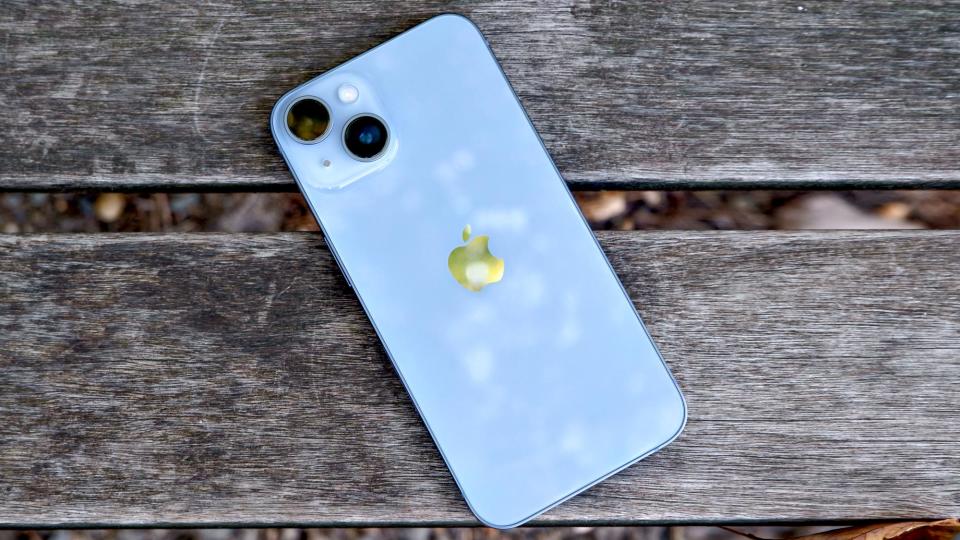
3. iPhone 14
The best iPhone for most people
Screen size: 6.1-inch OLED (2532 x 1170) | CPU: A15 Bionic | Cameras: 12MP (f/1.5) main, 12MP (f/2.4) ultrawide / 12MP front (f/1.9) | RAM/Storage: 6GB/128GB, 256GB, 512GB
Excellent cameras
Vibrant display
Action mode video impresses
Display refresh rate stuck at 60Hz
Uses A15 Bionic chipset found in iPhone 13 lineup
The iPhone 14 doesn’t have the flashier features found in its Pro siblings, but it’s still a solid upgrade, particularly if you’re looking to make the move from an older iPhone. The notch is still here, and like the iPhone 13, the iPhone 14 features an A15 Bionic chipset instead of the newer A16. But at least the iPhone 14’s version of the A15 features an extra GPU core, giving it a boost over the iPhone 13.
While the 48MP main camera on the iPhone 14 Pro is grabbing most of the attention, the iPhone 14’s camera improvements are noteworthy. A larger sensor with bigger pixels powers the main camera, improving performance in low light. The iPhone 14 also benefits from Apple’s new Photonic Engine, which delivers brighter images.
Action mode for capturing smoother video is available to iPhone 14 owners, and later this fall, the new phone will add support for crash detection and Emergency SOS via satellite. And that comes in a device that continues to cost $799, making it one of the more affordable flagships out there.
Read our full iPhone 14 review.
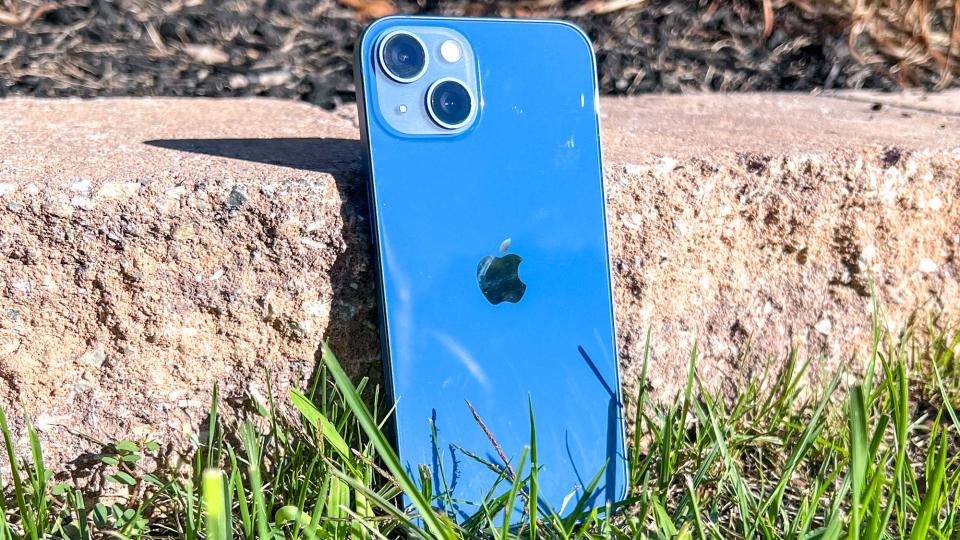

4. iPhone 13
A great iPhone value at a lower price
Screen Size: 6.1-inch OLED (2532 x 1170) | Processor: A15 Bionic | Cameras: 12MP wide (ƒ/1.6), 12MP ultrawide (ƒ/2.4) / 12MP front (ƒ/2.2) | RAM/Storage: Unknown/64GB, 128GB, 256GB
Brighter display
Great cameras
Class-leading performance
Lacks 120Hz display
Slower charging than rivals
The best iPhone for most people will be the iPhone 13, which properly balances a reduced price with some stellar features. By skipping the more expensive Pro line, you won’t get the fast-refreshing displays and you'll miss out on features that the iPhone 14 introduces. But the iPhone 13 is a worthy upgrade from older phones, and now it costs less than before at $699.
One of the best things about this new model is its storage — Apple finally includes 128GB with the base model, so you don’t necessarily have to jump to the next storage tier just to fit everything on your phone. The A15 processor continues to set the pace for mobile processors, allowing the iPhone 13 to outperform any Android device. (The iPhone 14 and iPhone 14 Plus, also use the A15, though one with more GPU cores than the iPhone 13's version.)
As with any iPhone 13 model, the real story here is the cameras. The iPhone 13 still features two rear lenses, but they have bigger sensors which should translate to improved low-light photography. What’s more, Apple includes a number of computational-powered features like Cinematic mode to automatically shift focus when you’re shooting video. It’s an impressive array of features in a phone that’s affordable priced.
Read our full iPhone 13 review.
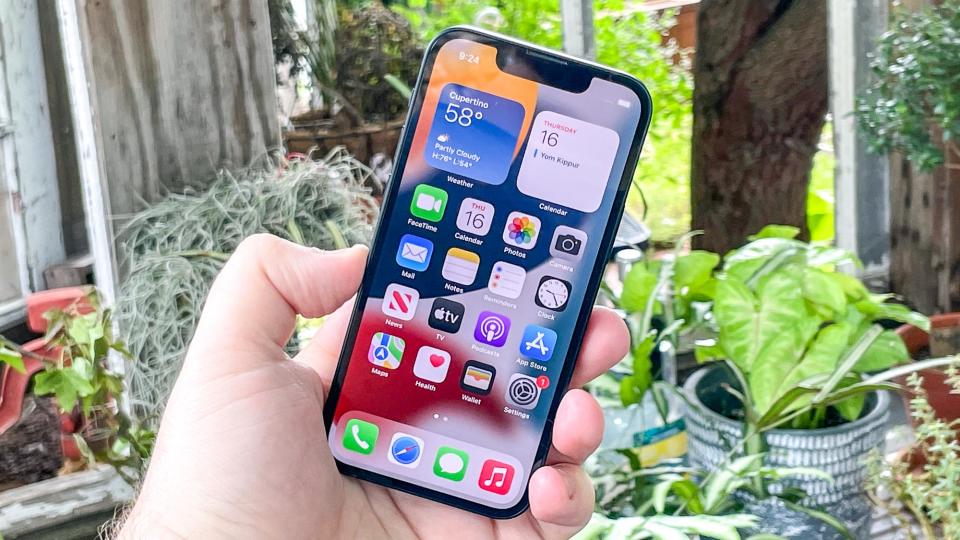
5. iPhone 13 mini
The best compact iPhone
Screen Size: 5.4-inch OLED (2340 x 1080) | Processor: A15 Bionic | Cameras: 12MP wide (ƒ/1.6), 12MP ultrawide (ƒ/2.4) / 12MP front (ƒ/2.2) | RAM/Storage: Unknown/64GB, 128GB, 256GB
Improved cameras
Better battery life
Base model has 128GB of storage
Fast charging limited to 20W
The iPhone 13 mini is the most powerful compact phone Apple’s ever made, thanks to that A15 Bionic chip that powers all the iPhone 13 models. That means the best performance in a smartphone can also be found in Apple’s 5.4-inch model, which also happens to be the least expensive entry in the iPhone 13 lineup.
Compact phones aren’t for everyone, and you won’t find the dynamically refreshing displays featured with the iPhone 13 Pro models, but the iPhone 13 mini has plenty to recommend it. It’s got the same camera setup as the iPhone 13, with larger sensors that let in more light than before. The display is also brighter than the iPhone 12 mini’s screen, and battery life is improved, if ever so slightly.
There's no mini in the iPhone 14 lineup so if you want a truly compact phone, the iPhone 13 mini remains the one to buy. Fortunately, Apple lowered the price by $100 to $599.
Read our full iPhone 13 mini review.
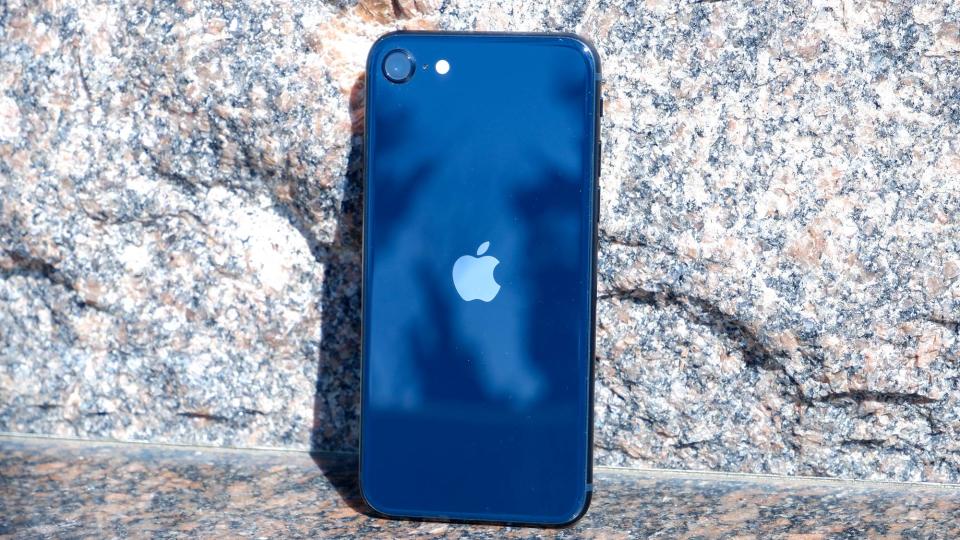
6. iPhone SE (2022)
A fine budget iPhone option
Display size: 4.7-inch LCD (1344 x 750) | CPU: A15 Bionic | Cameras: 12MP (f/1.8) rear; 7MP (f/2.2) front | RAM / Storage: 4GB / 64GB, 128GB, 256GB
Fastest performance for the money
Very good photo quality
More durable design
No Night mode for camera
No mmWave 5G support
The iPhone SE (2022) is the most budget-friendly option in the modern iPhone lineup. Starting at $429 for the 64GB model, the latest SE is a veritable powerhouse that runs laps around anything else at this price point. You will not find something that performs better under $500.
With the same A15 Bionic chipset that’s in the iPhone 13 — but lacking the extra GPU core found in the A15 powering the iPhone 14 — the iPhone SE (2022) can handle any task you set before it, all in an incredibly compact body. However, the 4.7-inch LCD is a bit of a letdown with a low resolution by today’s standards (1344 x 750). The chunky bezels of the classic iPhone design also look incredibly dated.
Perhaps the most egregious omission from the new SE is the lack of Night mode. It’s even sadder because the phone takes great photos in daylight. And it also lacks mmWave 5G, so people hoping to take advantage of Verizon’s Ultra Wideband network will be left out in the cold with the latest iPhone SE. Apple's phone certainly came up short in our Google Pixel 6a vs. iPhone SE 2022 comparison.
Read our full iPhone SE (2022) review.
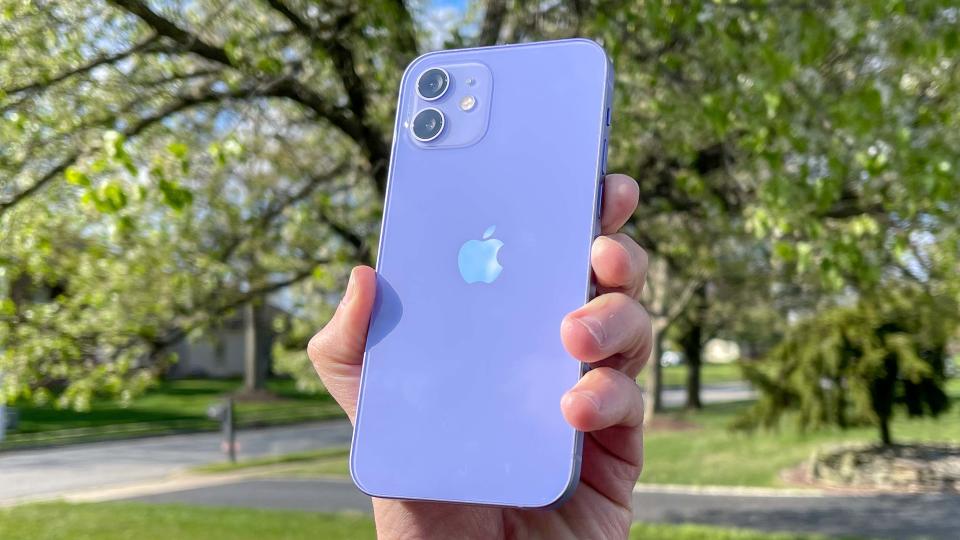

7. iPhone 12
Top iPhone features for an even lower price than before
Screen Size: 6.1-inch OLED (2532 x 1170) | Processor: A14 Bionic | Cameras: 12MP wide (ƒ/1.6), 16MP ultrawide (ƒ/2.4) rear / 12MP front (ƒ/2.2) | RAM/Storage: 4GB/64GB, 128GB, 256GB
Sub-$600 price
Impressive cameras
Comprehensive 5G coverage
Only 64GB of storage in base model
No charger in the box
The iPhone 12 is the lone remaining phone from Apple's 2020 lineup that is still available from the phone maker. At $599, it costs the same as the iPhone 13 mini, but you're getting a bigger 6.1-inch screen.
Opt for the iPhone 12, and you get an A14 Bionic processor — still a top performer — and comprehensive 5G connectivity. You only get two rear cameras on the iPhone 12, but they perform better than ever, thanks to software improvements Apple made. A 7-element lens on the main camera combined with a wider aperture than before means better photos in low-light and sharper images overall than Apple's older phones.
The LCD panel Apple used on the iPhone 12’s predecessor is gone, replaced by an OLED screen that offers the same 6.1 inches of display real estate as before. You’re still confined to 64GB of storage in the base model and there’s no charger included with the phone, but otherwise, this remains a fine budget buy in the iPhone lineup.
Read our full iPhone 12 review.
How to choose the best iPhone for you
When shopping for an iPhone, take stock of the features and capabilities that matter most to you. If battery life is especially important, seek out a larger iPhone, as they tend to have bigger batteries to match their screen size. What's more, because iOS is known to be generally efficient in terms of energy consumption, even the smaller models tend to last longer than average on a charge.
If you're basing your next iPhone purchase off camera quality, the top-tier Pro variants are easy recommendations, thanks to triple-lens designs that allow you to capture multiple different perspectives, from zoomed-out ultra wide-angle images to shallow depth-of-field portraits. They're also remarkably good in challenging lighting scenarios, like when shooting in a dimly-lit indoor space, or outdoors at night.
All that said, if price is king, and saving the absolute most on your next smartphone purchase is your top priority, you should have no reservations about nabbing an either the iPhone SE or an older model with a lower price tag. They may be on the cheaper side of Apple's range, but they're still made of flagship-quality materials, with enough power and performance to sustain years of use.
However, be mindful of storage. The $599 iPhone 12 only comes with 64GB of space in its base model; if you want more capacity, be prepared for that price tag to go up. The iPhone 13 and iPhone 13 mini address that problem by bumping base storage to 128GB. The iPhone 14 lineup starts at 128GB, too.
If you buy your iPhone through Apple, you may be able to save money by trading in your current phone. Apple's trade-in rebates promise anywhere from $40 up to $720 off if you have an iPhone 7 or newer. (The trade-in value increases for newer models.) Note that if you buy your iPhone unlocked from Apple, you'll need to tack another $30 onto the base price. (The exception to this is the iPhone 14 Pro and iPhone 14 Pro Max.)
We track special offers from carriers and retailers to find the best iPhone deals by model:
When Apple releases new iPhones, it cuts the price on the models it keeps around. That's why you're paying less for the iPhone 13, iPhone 13 mini and iPhone 12 now that the iPhone 14 has launched.
All of the iPhones mentioned here can run iOS 16, which is available for download now. (The iPhone 14 models ship with iOS 16 preinstalled.) Check our our guide to the iOS 16 features, including tips and tricks on the iPhone software's latest features.
With the iPhone out, expect iPhone 15 rumors to pick up. Yes, that phone's launch is a year away, but we're already hearing about potential features like a periscope camera for better zooming and USB-C replacing the phone's Lightning port.
How we test iPhones
As with any smartphone we test at Tom's Guide, we evaluate iPhones for days in real-world use cases. We also benchmark Apple's phones using a gamut of performance-measuring apps that allow us to compare iPhone performance to what Android devices are capable of. In addition to synthetic benchmarks, we also run real-world tests, including a video transcoding test in Adobe Premiere Rush that compares the iPhone's processing speed with other devices.
In our lab, we use a light meter to ascertain display quality data, like brightness and color accuracy to help us evaluate the display of the best iPhones. Our proprietary battery test determines longevity on a charge by endlessly streaming webpages over an LTE network; we then recharge the iPhones to see how quickly they charge in 15-minute intervals.
To compare cameras, we take any iPhone we review out and shoot photos in a variety of settings. We also bring along a comparable smartphone to see how the iPhone's photographic output measures up.
We explore Apple's iOS improvements, test gaming performance and evaluate the phone's speakers — and each of these factors play a part in our final verdict.

